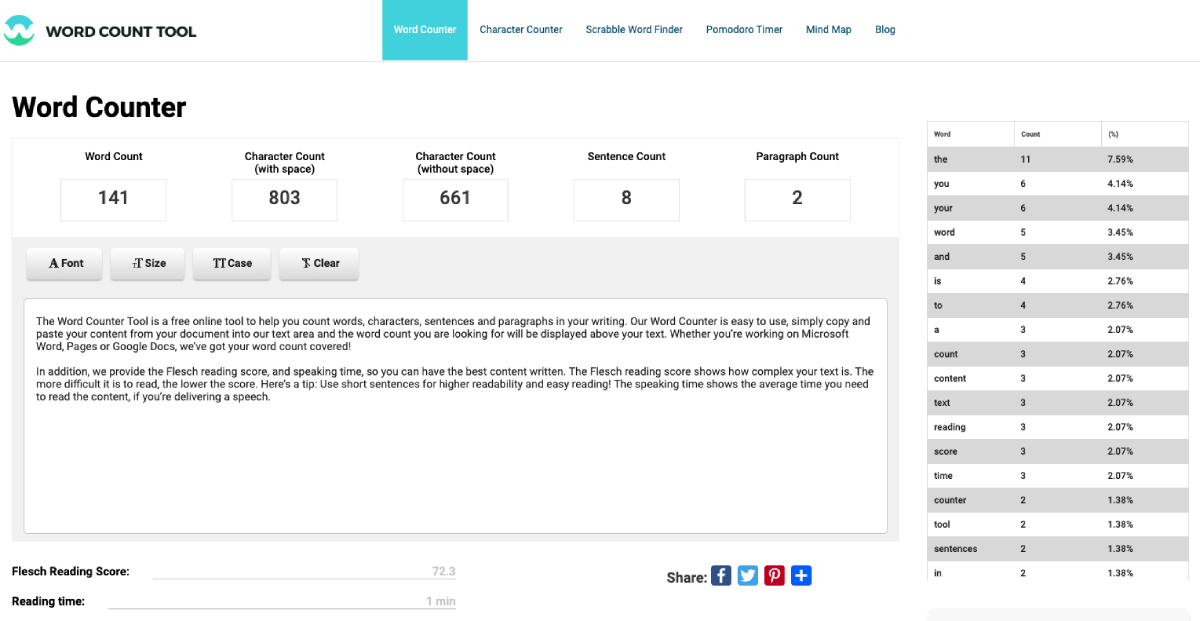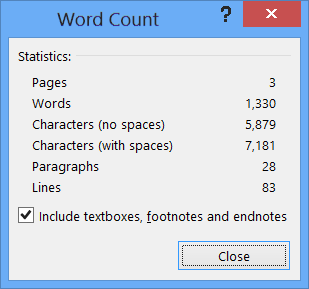

If you want to add words to the exclusion list, simply add them to the string, between. This string contains words that the macro will ignore when putting together the word list. Note that there is a line in the macro that sets a value in the Excludes string. (I ran it with a 719-page document with over 349,000 words and it took about five minutes to complete.) Depending on the size of your document and the speed of your computer, the macro may take a while to complete. While the macro is running, the status bar indicates what is happening. If you choose frequency, then the resulting list is in descending order based on how many times the word appeared in the document. If you choose word, then the resulting list is shown in alphabetical order. When you open a document and run this macro, you are asked if you want to create a list sorted by word or by frequency.

" different words ", vbOKOnly, "Finished") J = MsgBox("There were " & Trim(Str(WordNum)) & _ TmpName = ĭocuments.Add Template:=tmpName, NewTemplate:=False If (Not ByFreq And Words(l) Freq(k)) Then k = l StatusBar = "Remaining: " & ttlwds & ", Unique: " & WordNum The following VBA macro will do just that.Ĭonst maxwords = 9000 'Maximum unique words allowedĭim SingleWord As String 'Raw word pulled from docĭim Words(maxwords) As String 'Array to hold unique wordsĭim Freq(maxwords) As Integer 'Frequency counter for unique wordsĭim WordNum As Integer 'Number of unique wordsĭim ByFreq As Boolean 'Flag for sorting orderĭim ttlwds As Long 'Total words in the documentĭim Excludes As String 'Words to be excludedĭim j, k, l, Temp As Integer 'Temporary variablesĭim ans As String 'How user wants to sort resultsĮxcludes = ""Īns = InputBox("Sort by WORD or by FREQ?", "Sort order", "WORD") If you want to determine all the unique words in a document, along with how many times each of them appears in the document, then a different approach is needed. MsgBox sResponse & " appears " & iCount & " times" Prompt:="What word do you want to count?", _ ' Input different words until the user clicks cancel It will continue to ask for another word until the user clicks on the Cancel button. The following macro prompts the user for a word, and then counts the number of times that word appears in the document. You can automate the process a bit by using a macro to search through the document and count for you. This approach works great if you just have one or two words or phrases you want to know about. Word makes the replacements and shows you how many instances it replaced. If you are searching for individual words, make sure you click the Find Whole Words Only check box.

(In other words, you are replacing the word or phrase with itself.) This character sequence tells Word that you want to replace what you find with whatever you placed in the Find What box.

When you’re done, you’ll have a fully formed table. Unfortunately, Word doesn’t let you select a bunch of cells at once and create a formula for all of them in one step, so you’ll have to perform these same steps in each of the other cells in the “Total” column. The result of the formula displays in the cell. Select an option from the Number format drop-down list to specify the format for the result of the formula.Ĭlick “OK” to accept the settings and insert the formula into the cell.


 0 kommentar(er)
0 kommentar(er)
